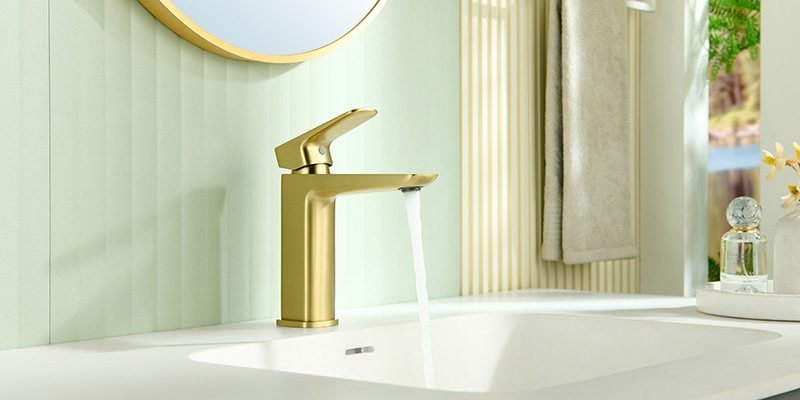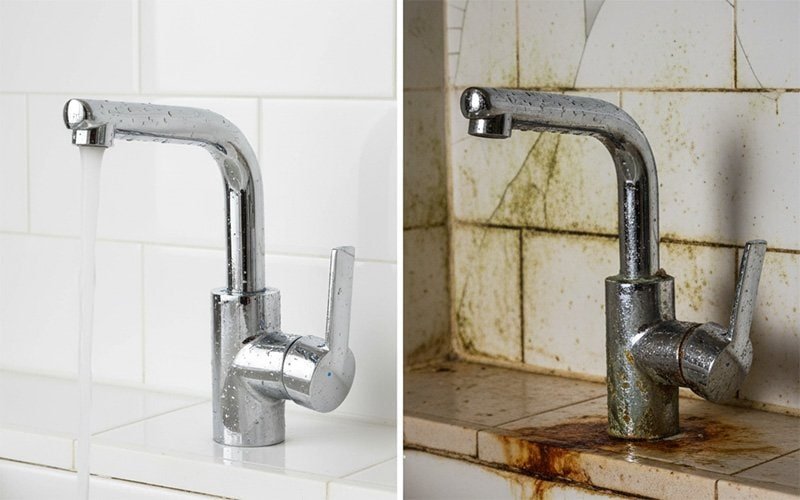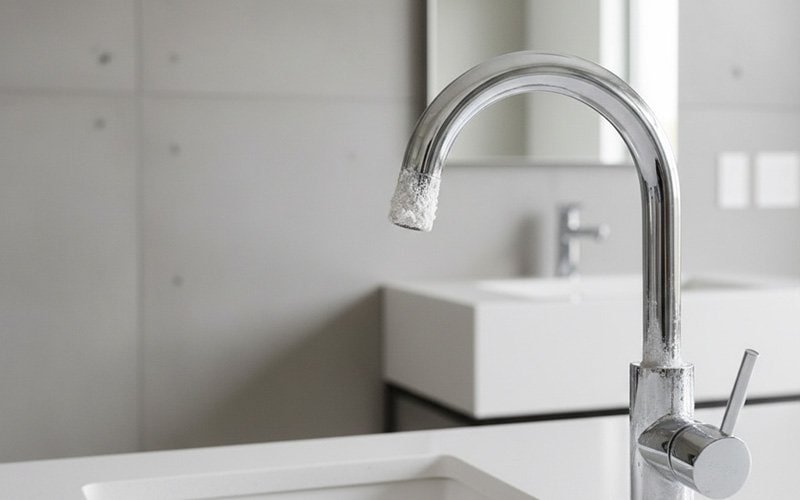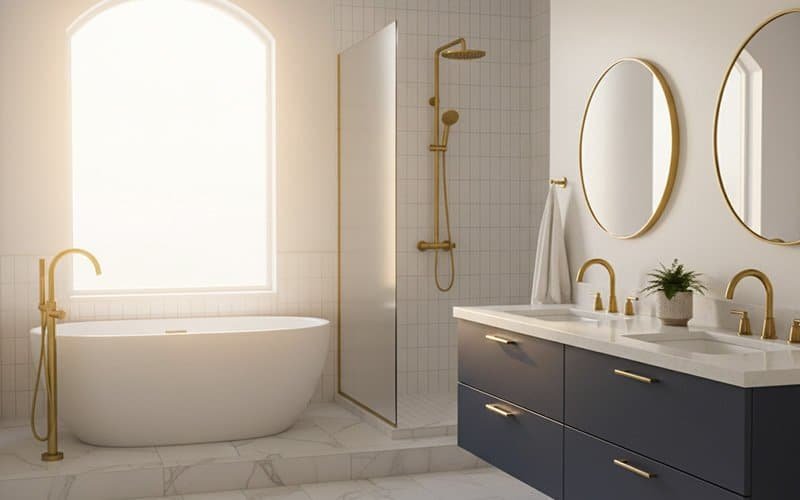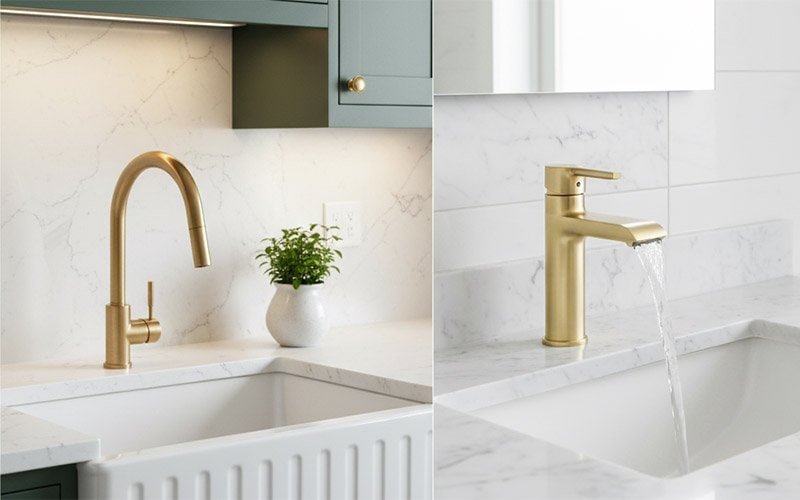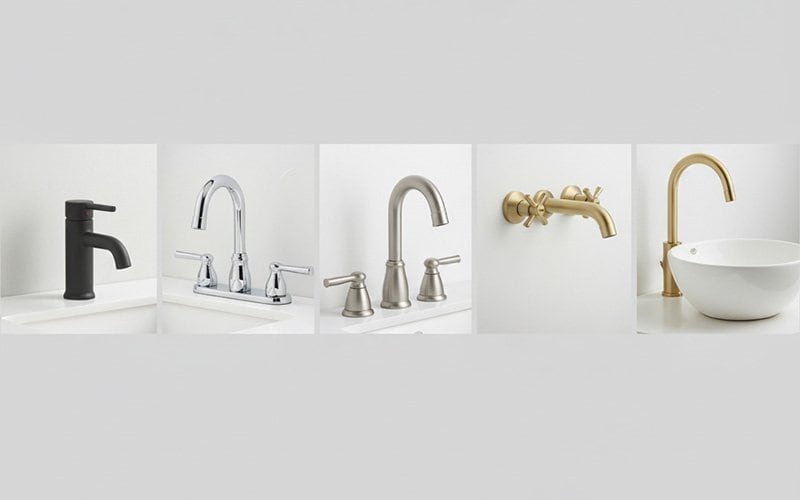
Your bathroom faucet does a simple job, but there are many different types. Faucets are grouped by how you mount them, what kind of handle they have, and the valve technology inside.
Knowing these categories helps you understand your options. This guide gives you a direct breakdown of the main types of bathroom faucets. You will learn about their specific designs and what makes each one different.
Faucet Types by How You Mount Them
The main way to classify a faucet is by how you install it. Your sink or countertop has a set number of holes, and their spacing determines which faucet you can use.
Single-Hole Faucets
You install a single-hole faucet through one opening in your sink or countertop. It usually has one handle to control water volume and temperature. If your sink has extra holes, you can use an optional base plate to cover them.
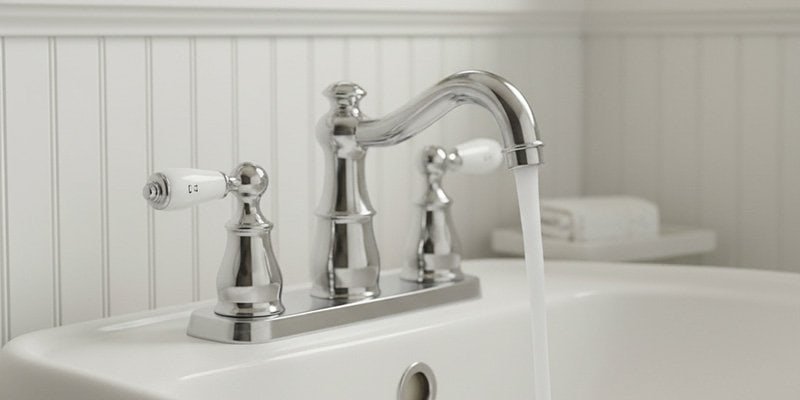
Centerset Faucets
You need a sink with three holes for a centerset faucet. The handles and spout are all part of a single base unit. The two outer holes are four inches apart, which makes this type a compact choice for smaller bathrooms.

Widespread Faucets
A widespread faucet has three separate pieces: a spout and two handles. You need a three-hole sink for this type. The spacing between the handles is flexible, usually between 8 and 16 inches, which gives you a more spacious look on larger vanities.

Wall-Mounted Faucets
You install a wall-mounted faucet directly onto the wall above your sink. This style frees up counter space and makes cleaning easier. Installation is complex because the plumbing and valve are inside the wall, a job that often requires a professional plumber.
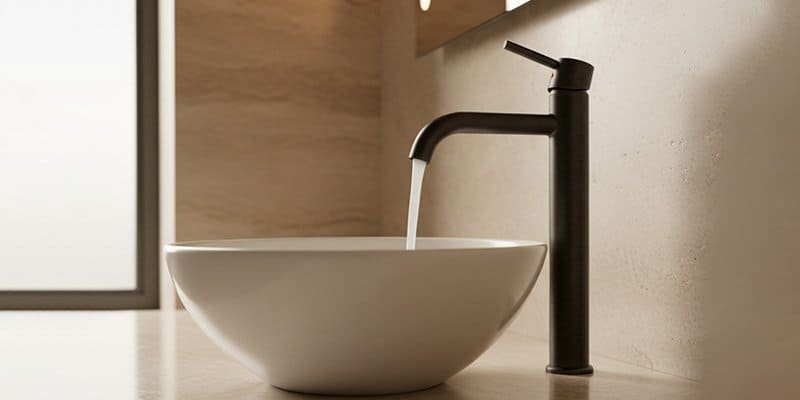
Vessel Faucets
Vessel faucets are tall faucets made for vessel sinks, which are basins that sit on top of your counter. The extra height clears the tall rim of the sink. Most vessel faucets have a single handle.
| Faucet Mounting Type | Required Holes | Hole Spacing (Center-to-Center) | Common Application |
|---|---|---|---|
| Single-Hole | 1 (or 3 with deck plate) | N/A | Modern sinks, small spaces |
| Centerset | 3 | 4 inches | Standard sinks, smaller bathrooms |
| Widespread | 3 | 8 to 16 inches | Larger vanities, custom layouts |
| Wall-Mount | 2 (in wall) | 8 inches (standard) | Vessel or undermount sinks |
| Vessel | 1 | N/A | Vessel sinks (above-counter basins) |
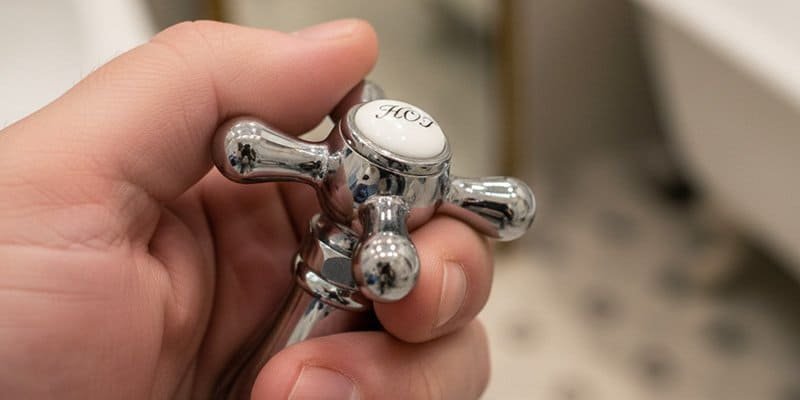
Faucet Types by Handle
You can also group faucets by their handle style. The handle is how you control the water, and the main choice is between one handle or two.
Handle Configurations
- Single-Handle Faucets: You use a single lever or knob to control both water flow and temperature. This design is simple to use with one hand.
- Double-Handle Faucets: You get separate handles for hot and cold water. This gives you precise control over the water temperature.
Common Handle Styles
- Lever Handles: Levers are long, easy to grip, and simple to operate. This is the standard for ADA compliant faucets, which must be operable without tight grasping or twisting, according to the official (https://www.ada.gov/law-and-regs/design-standards/2010-stds/).
- Cross Handles: These handles have a classic “X” shape that is easy to grip, even with wet hands.
- Knob Handles: Knobs have a simple, rounded shape, and you operate them with a twisting motion.
- Joystick Handles: A joystick handle is a modern option that gives you multi-directional control over water flow and temperature from a single point.
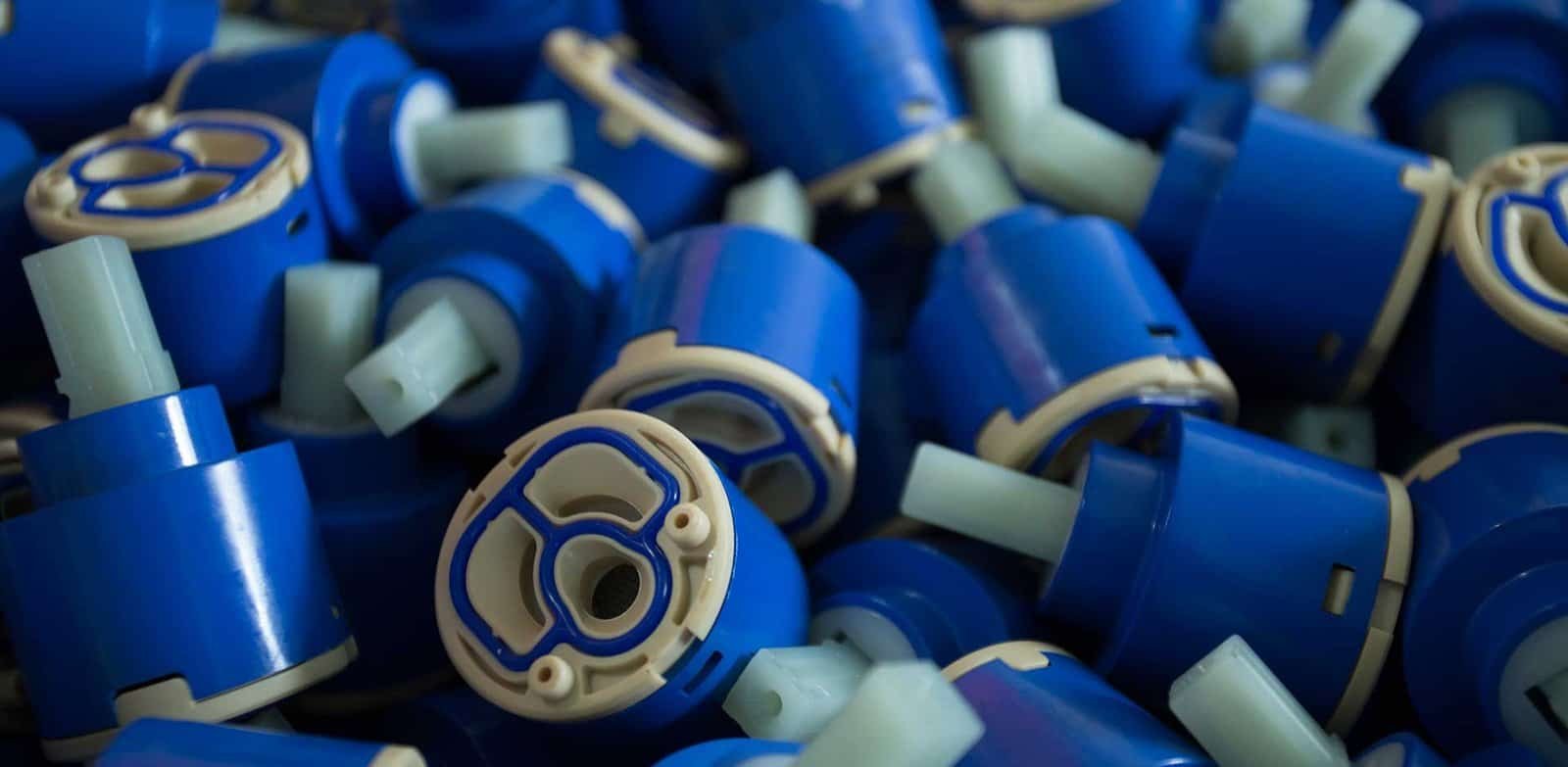
Faucet Types by Internal Valve
Inside every faucet is a valve that controls the water. The type of valve determines how the faucet performs and how long it lasts.
Compression Valve Faucets
This is the oldest valve type. When you turn the handle, it pushes a rubber washer down to stop the water. These valves are inexpensive, but the washers wear out over time, which causes drips.
Ball Valve Faucets
Found in single-handle faucets, a ball valve uses a slotted metal or plastic ball that rotates to control water flow. They are more durable than compression valves but have many small parts that can wear out.
Cartridge Valve Faucets
A cartridge faucet uses a self-contained cylinder to control water. These valves are reliable and smooth. If a leak occurs, you typically just replace the entire cartridge.
Ceramic Disc Valve Faucets
This is a modern faucet technology. Two hard ceramic discs rotate against each other to create a watertight seal. These valves are very durable and rarely need repairs.
| Valve Type | Mechanism | Common Handle Type(s) | Key Characteristic |
|---|---|---|---|
| Compression | Rubber washer is compressed to stop water. | Double-Handle | Traditional design, requires more maintenance. |
| Ball | Slotted rotating ball controls water flow. | Single-Handle | An early washerless design. |
| Cartridge | Movable cylinder controls water flow. | Single or Double-Handle | Reliable; you fix leaks by replacing the cartridge. |
| Ceramic Disc | Two rotating ceramic discs create a seal. | Single or Double-Handle | Very durable and resistant to leaks. |
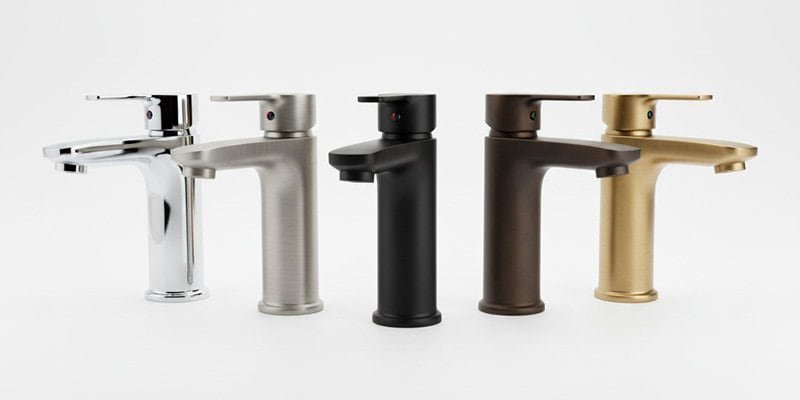
Common Faucet Materials and Finishes
The materials and finishes of a faucet define its look and durability.
Faucet Body Materials
The material inside your faucet is key to its lifespan. According to This Old House, the weight of a faucet can be a good indicator of its quality.
- Solid Brass: This is a durable, corrosion-resistant material used in high-quality faucets.
- Zinc and Zinc Alloys: These materials are a more budget-friendly option that offer good performance.
- Stainless Steel: Another durable option, stainless steel is strong, corrosion-resistant, and long-lasting, often used in kitchen faucets and commercial settings. It is hygienic and resistant to rust and stains, but sometimes shows fingerprints and smudges. Stainless steel faucets can also last decades.
- Plastic (ABS): Plastic faucets are lightweight, inexpensive, and available in many colors and styles. They are less durable and more suited for temporary or budget installations. High-quality plastic faucets can mimic metal appearances but do not withstand rigorous use as well.
Popular Finishes
The finish is the external coating you see. Common choices include:
- Polished Chrome: A classic, durable, and reflective finish.
- Brushed & Satin Nickel: A soft metallic look that hides water spots well.
- Matte Black: A bold, non-reflective finish for modern designs.
- Bronze: A deep, warm color that suits traditional and rustic styles.
- Brass & Gold Tones: Finishes that add warmth, available in polished or brushed textures.
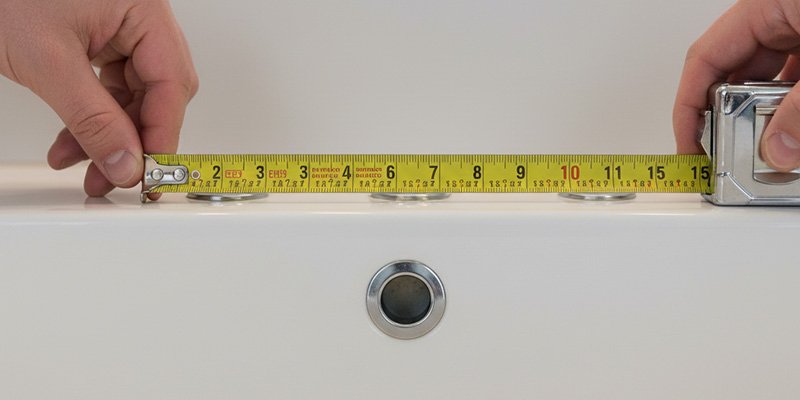
Frequently Asked Questions (FAQ)
Conclusion: A Quick Recap of Faucet Types
You can identify bathroom faucets in three main ways.
- By Mounting Type: This depends on your sink’s hole setup and includes single-hole, centerset, widespread, and wall-mount faucets.
- By Handle Type: This is how you control the water, with single-handle and double-handle options being the most common.
- By Valve Type: This is the internal part that controls water flow, such as compression, cartridge, or ceramic disc valves.
Understanding these types helps you recognize the different faucets available for your bathroom.
Related Posts



